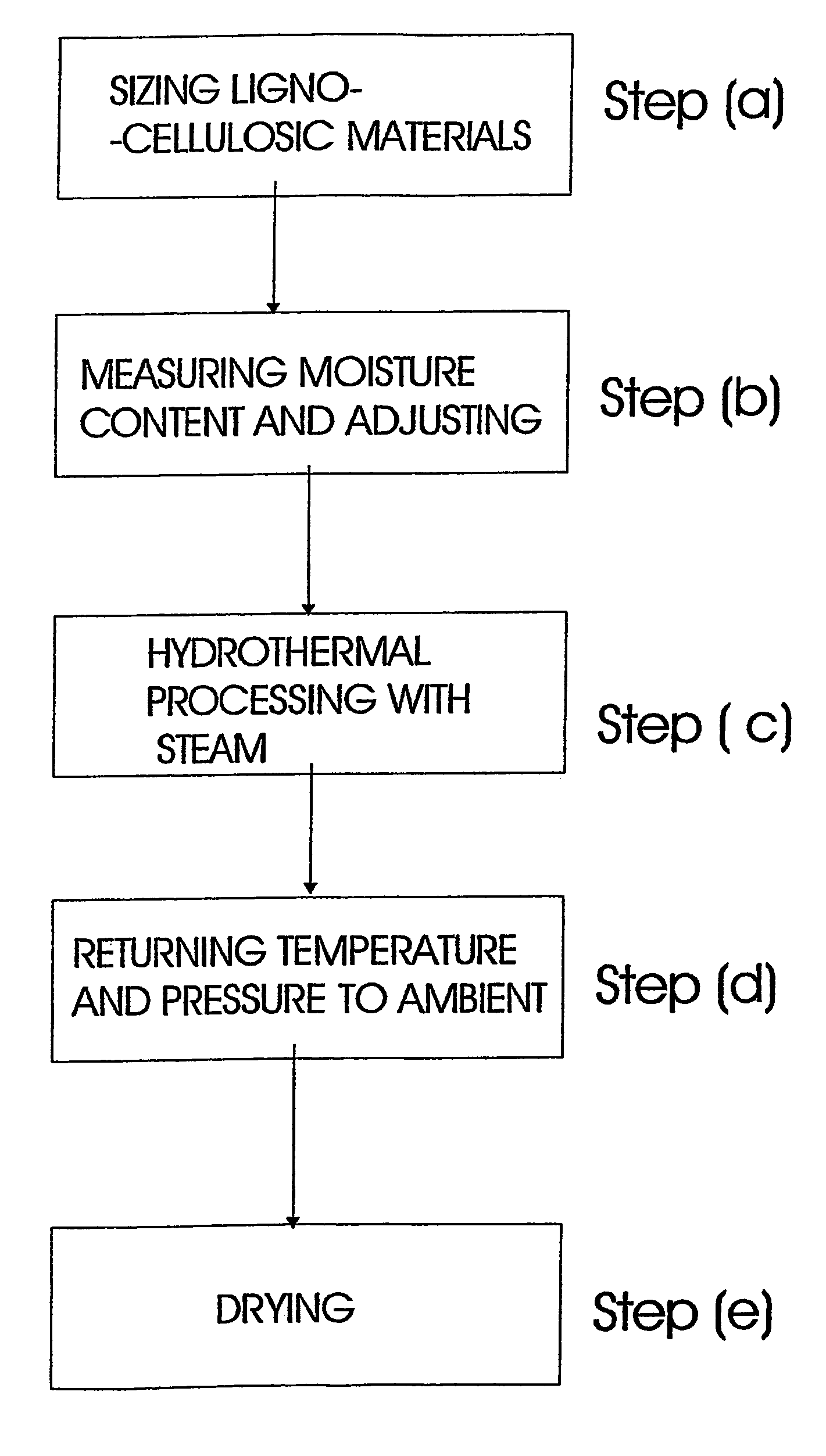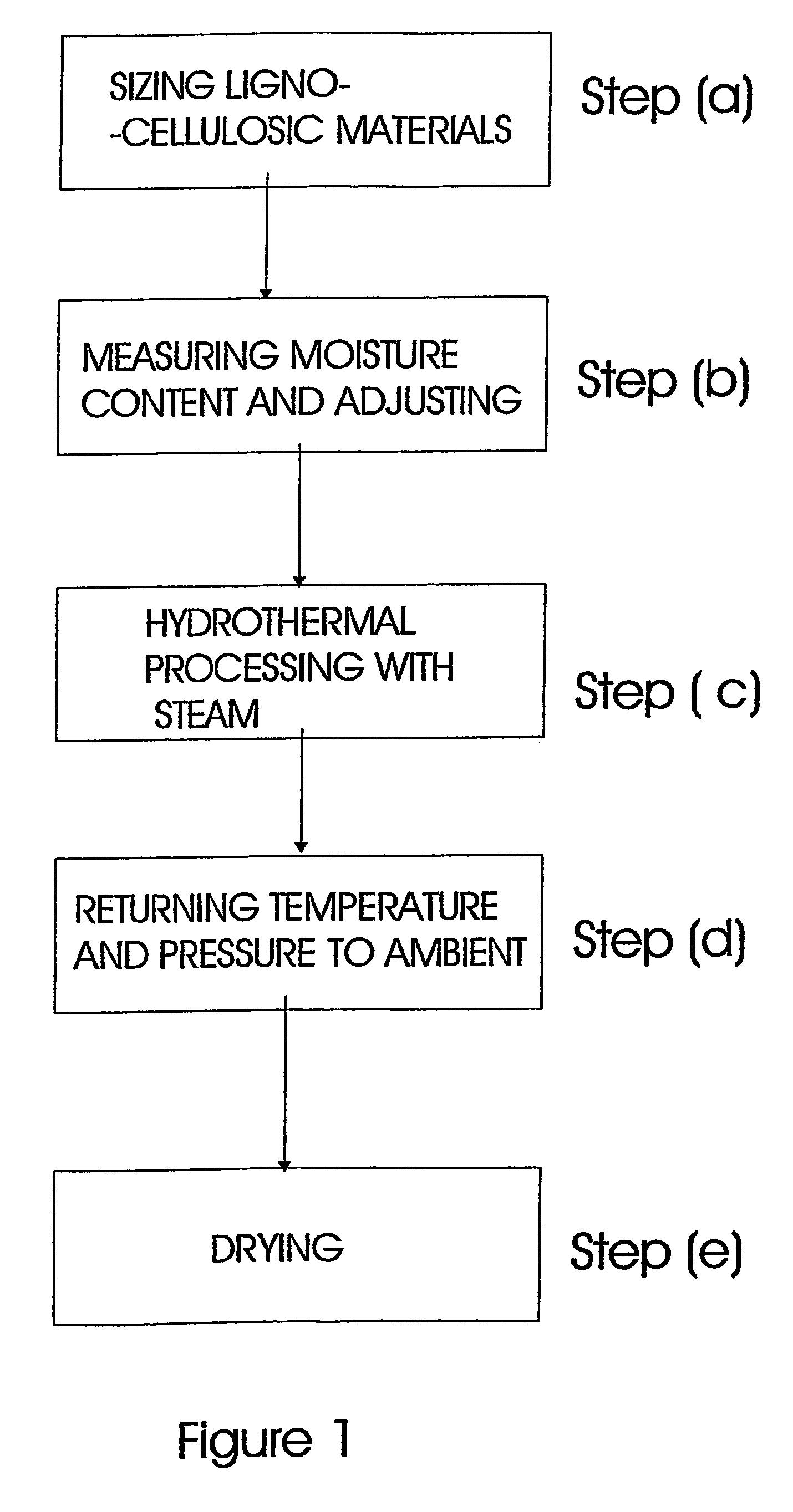Processing of ligno-cellulose materials
a technology of lignocellulosic materials and cellulose, which is applied in the field of processing lignocellulosic materials, can solve the problems of weakening and less water-repellent products, reducing the efficiency of surface coating and adhesive, and liquefying the adhesive bond formed by the masonite process, and achieves superior qualities
- Summary
- Abstract
- Description
- Claims
- Application Information
AI Technical Summary
Benefits of technology
Problems solved by technology
Method used
Image
Examples
Embodiment Construction
[0025]The range of lignocellulosic material which may be processed is broad. Amongst the materials that may be processed are Pinus radiata sawdust and mixed sawdust from the species Cupressus macrocarpa, Pinus radiata, Eucalyptus sp and Acacia sp. Other material can be for instance Rimu (Dacrydium cupressum) and Red Beech (Nothofagus sp) shavings and sawdust, wheat straw, and oat straw chaff. These examples of suitable materials are not intended to be limiting and are provided solely as an indication of some of the materials that can be processed. For instance other materials such as bark and recycled paper can be utilised.
[0026]The material to be processed is comminuted to a size that will enable the material to be gunned in known hydrothermal pressure vessels. In a highly preferred form, the material is comminuted to a size that will fall within the range of length up to 40 mm, width up to 6 mm and a height of up to 6 mm. In a yet more highly preferred form, the thickness of the m...
PUM
| Property | Measurement | Unit |
|---|---|---|
| thickness | aaaaa | aaaaa |
| length | aaaaa | aaaaa |
| particle size | aaaaa | aaaaa |
Abstract
Description
Claims
Application Information
 Login to View More
Login to View More - R&D
- Intellectual Property
- Life Sciences
- Materials
- Tech Scout
- Unparalleled Data Quality
- Higher Quality Content
- 60% Fewer Hallucinations
Browse by: Latest US Patents, China's latest patents, Technical Efficacy Thesaurus, Application Domain, Technology Topic, Popular Technical Reports.
© 2025 PatSnap. All rights reserved.Legal|Privacy policy|Modern Slavery Act Transparency Statement|Sitemap|About US| Contact US: help@patsnap.com


